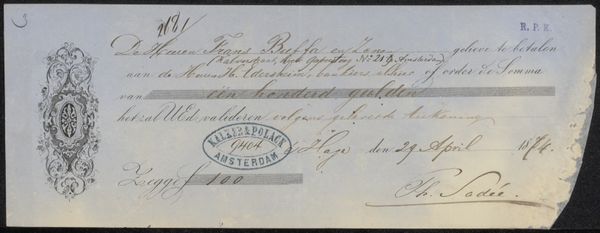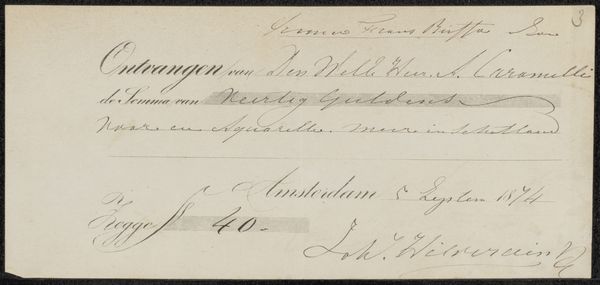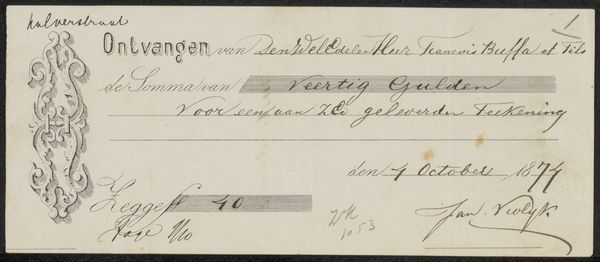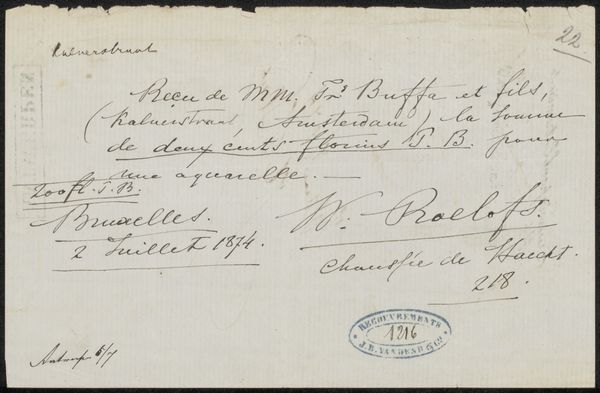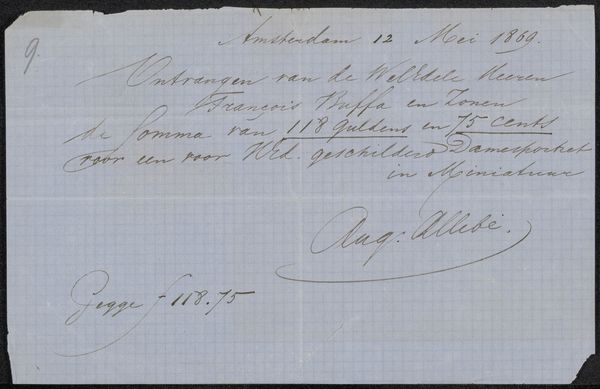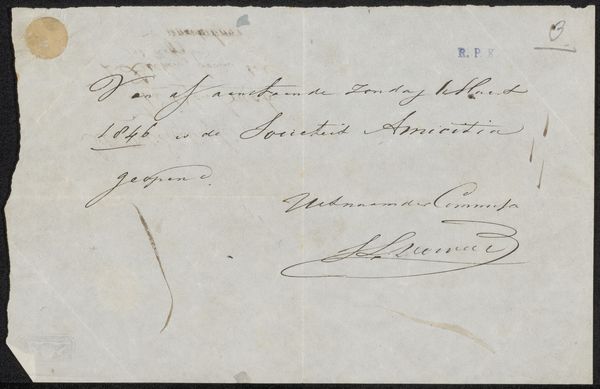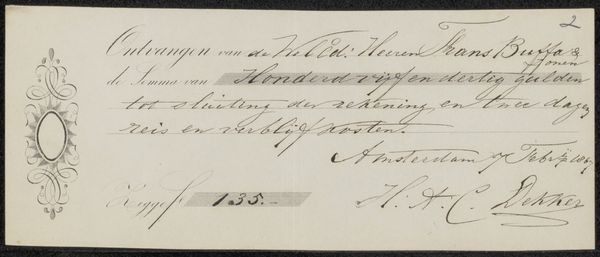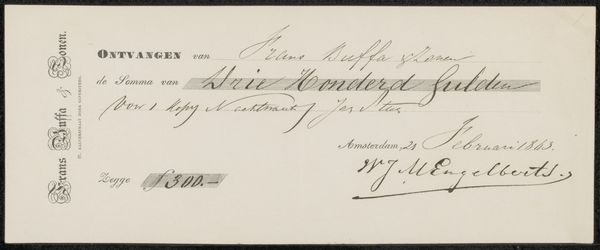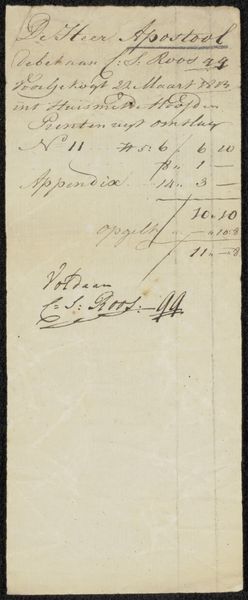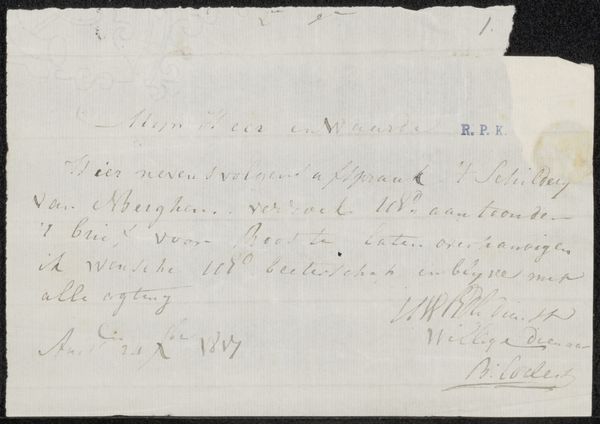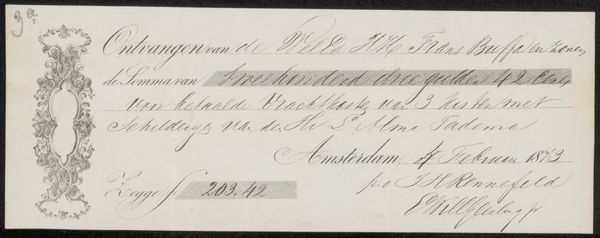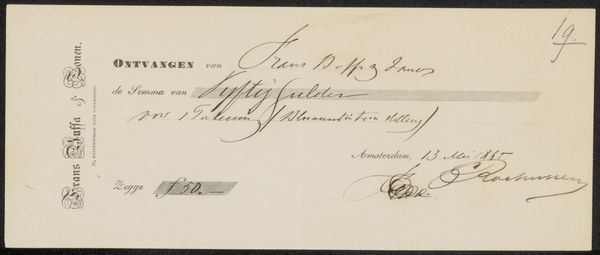
Kwitantie voor Christiaan Lodewijk van Kesteren Possibly 1880 - 1882
0:00
0:00
fransbuffaenzonen
Rijksmuseum
drawing, paper, ink, pencil
#
drawing
#
hand-lettering
#
lettering
#
hand drawn type
#
hand lettering
#
paper
#
personal sketchbook
#
ink
#
hand-drawn typeface
#
fading type
#
pencil
#
sketchbook drawing
#
genre-painting
#
sketchbook art
#
miniature
#
small lettering
Copyright: Rijks Museum: Open Domain
Editor: So, here we have "Kwitantie voor Christiaan Lodewijk van Kesteren," potentially from 1880-1882, created by Frans Buffa en Zonen. It looks like an ink and pencil drawing on paper. It strikes me as incredibly delicate, almost ephemeral. What do you see when you look at this piece? Curator: I see a fascinating document that speaks volumes about the material conditions of artistic exchange in the late 19th century. Look at the paper itself, likely mass-produced, and the way ink and pencil are used – humble materials for what would have been a significant transaction. This isn't "high art," but it's evidence of art's deep integration into commerce and social life. Consider the labour involved in producing such a detailed receipt, especially the hand-lettering. Editor: I hadn't thought about the hand-lettering as labor. So, the meticulousness wasn’t necessarily artistic expression, but a skill embedded in a transactional process? Curator: Exactly. Think about the social context: the relationship between the artist or art dealer (Frans Buffa en Zonen) and their patron (Christiaan Lodewijk van Kesteren). The receipt represents a contract, an exchange of value. And the fact that it is drawn points to a potential area of material value for collectors. What can it tell us about the circulation of money and art at the time? About what counted as valuable? Editor: So, it's less about the image itself, and more about its function within a system? A material record of an art transaction... interesting. Curator: Precisely! And by focusing on these material aspects, we can question traditional art historical narratives that privilege aesthetic qualities over the realities of production and consumption. Editor: That’s a completely different lens through which to view this drawing. I guess there’s so much we miss if we ignore the "everydayness" of art's existence! Curator: Indeed. Approaching even seemingly minor artifacts like this one through materialist analysis can reveal valuable insights into the broader cultural and economic landscapes of the past.
Comments
No comments
Be the first to comment and join the conversation on the ultimate creative platform.
